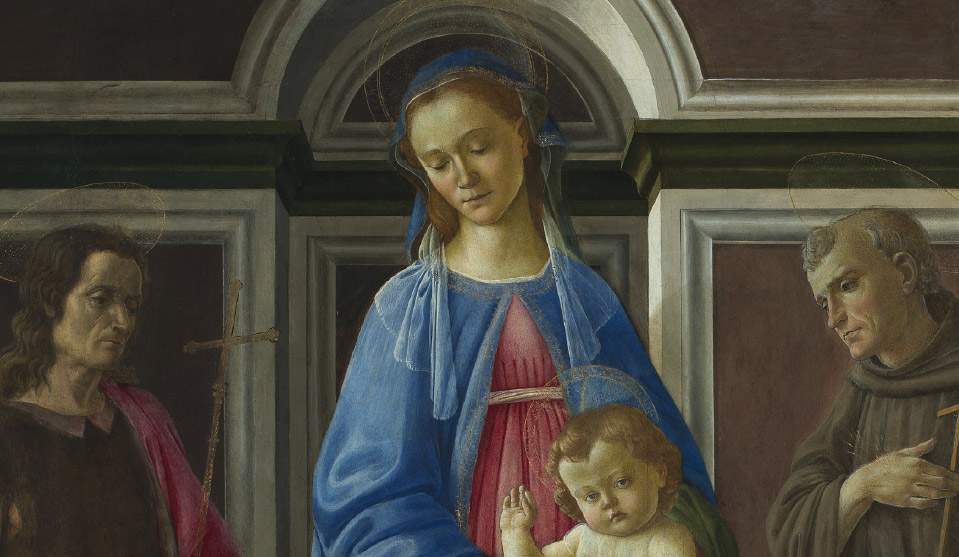Florence, finishes restoration of Botticelli's St. Ambrose Altarpiece. Results presented at the Uffizi on Wednesday
The restoration of the St. Ambrose Altarpiece, a masterpiece by Sandro Botticelli (Florence, 1445 - 1510) kept at the Uffizi Gallery, is finished. The results of the intervention, supervised by theOpificio delle Pietre Dure, will be presented on Wednesday, June 12, at 12 p.m. in the Vasari Auditorium of the Uffizi. Marco Ciatti, superintendent of the Opificio delle Pietre Dure, Cecilia Frosinini, art historian of the Opificio delle Pietre Dure, and Maria Vittoria Rimbotti, president of the Friends of the Uffizi, will speak. The results of the diagnostic campaign that was carried out on the painting will also be presented on the occasion.
Botticelli made the painting roughly between 1467 and 1470. The St. Ambrose Altarpiece, close to the teachings of Filippo Lippi, the Florentine artist’s master, is Botticelli’s first known large altarpiece and comes from the church of Sant’Ambrogio, although it is not known whether that was the work’s original location (it probably was not). It is a sacred conversation that follows the classic setting with the Madonna and Child in the center, and the saints (Mary Magdalene, John the Baptist, Francis and Catherine of Alexandria standing, and below Cosmas and Damian) arranged all around, against the backdrop of a balanced and sober Albertian architecture. The presence of Saints Cosmas and Damian, patron saints of the Medici family, suggests that the commission was from the Medici sphere. The painting remained in the church of Sant’Ambrogio until the time of the Napoleonic suppressions, following which it ended up in the Galleria dell’Accademia, and later entered the Uffizi.
Pictured: Sandro Botticelli, Saint Ambrose Altarpiece, detail (c. 1467-1470; tempera on panel, 170 x 194 cm; Florence, Uffizi Gallery)
 |
| Florence, finishes restoration of Botticelli's St. Ambrose Altarpiece. Results presented at the Uffizi on Wednesday |
Warning: the translation into English of the original Italian article was created using automatic tools. We undertake to review all articles, but we do not guarantee the total absence of inaccuracies in the translation due to the program. You can find the original by clicking on the ITA button. If you find any mistake,please contact us.




























